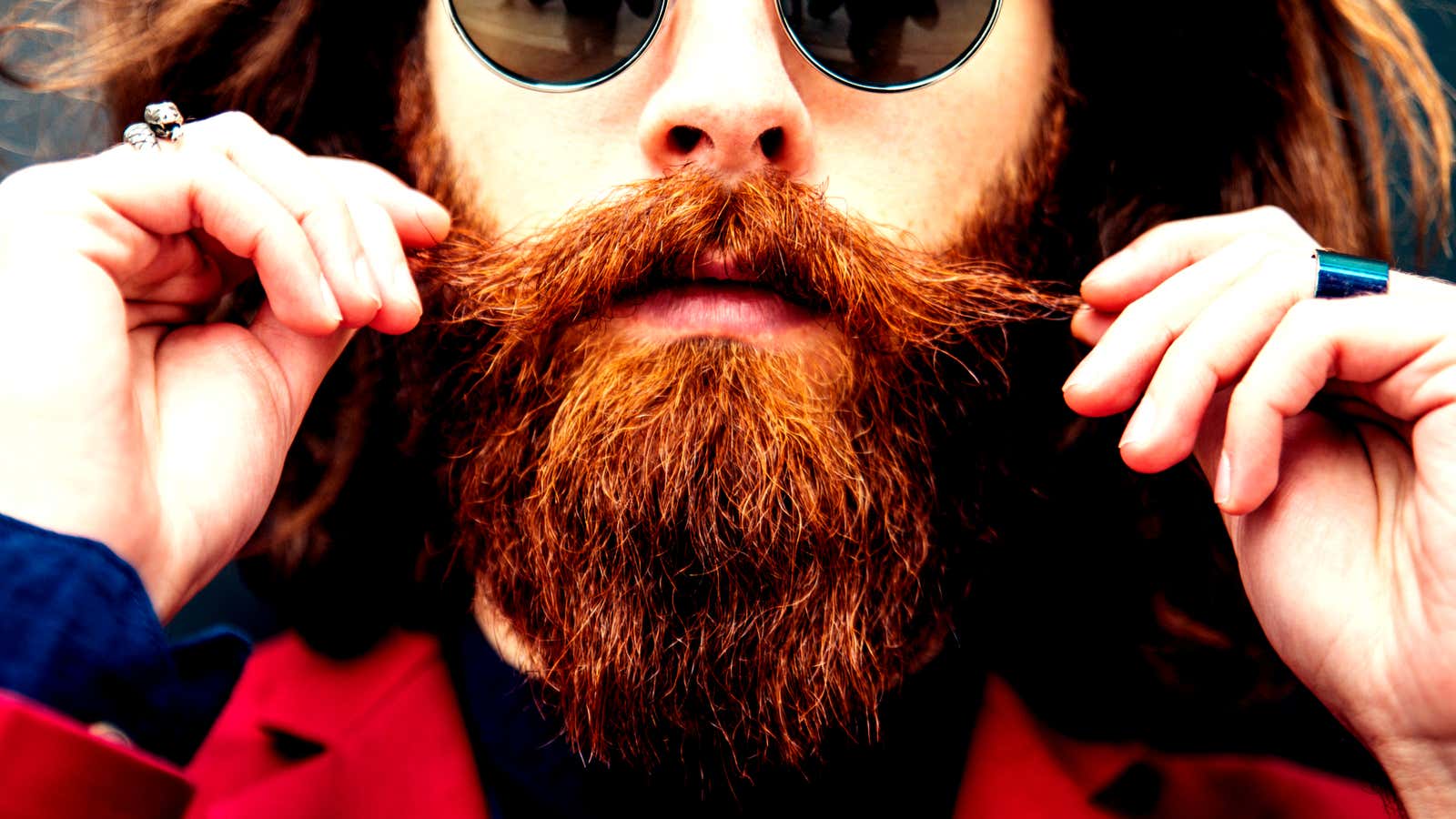How to Beat Beard Dandruff Once and for All

If you’ve had difficulty growing and maintaining a shiny beard, the last thing you want is to have your gorgeous facial hair shaded by white flaky beard dandruff. It is itchy, ugly, and can turn a dark shirt into a warning sign for those you might otherwise be attracted to. But fear not: there are many ways to get rid of dandruff and make sure your beard is always in top shape.
What causes dandruff on the beard?
There are two main reasons for dandruff on the beard: dry skin and fungal infections. Dry skin usually occurs under the beard when you wash your face with harsh cleansers or regular soap . These products keep your face and beard clean , but they also remove any oils from your beard skin and hair that are preventing it from drying out. Dry skin can also occur when it’s very cold outside.
Fungal infections occur when the yeast that lives on your skin can hide from sunlight, which usually kills it and slows its growth, under your beard and mustache. The longer the hair in the beard gets, the more spots the Malassezia fungus can hide. If you completely shaved your face, the problem would most likely resolve on its own, but then you would no longer have amazing facial hair.
Wash and exfoliate your beard
First, you need to regularly wash and exfoliate the skin under your beard. Natural soaps and facial cleansers are best for this because they are less harsh and will not dry out your skin. Otherwise, choose a high quality facial cleanser designed to not only cleanse your face but moisturize your face as well. The classic dial pad you used is no good.
Then take some kind of exfoliating cream. This can be a brush or washcloth, or better yet, an exfoliating glove. You can then go under your beard with your fingers and remove all that old dead and dry skin, as well as any yeast and other fungi, before it starts to peel off like a snowstorm in July. When washing your face, use cold water instead of warm water as this will help prevent your skin from drying out. When you’re done, gently towel dry your beard without pulling on the hair follicles.
Use an anti-dandruff shampoo from time to time.
While anti-dandruff shampoos that target your scalp are not ideal for your face, they can help you deal with dandruff on your beard when it gets bad. If you have mild dandruff, Head & Shoulders can help – its active ingredient pyrithione zinc fights fungi and bacteria and treats mild seborrheic dermatitis (another possible cause of dandruff). The company actually has an entire page on its site dedicated to treating beard dandruff and calls Vermont America’s “beard capital”.
If you have very severe dandruff, Nizoral is another good option. This is another type of over-the-counter anti-dandruff shampoo with the active ingredient ketoconazole , which is used to treat dandruff and dermatitis with a prescription. However, Selsun Blue , another anti- dandruff shampoo, is not ideal: its active ingredient, selenium disulfide , is known to stop working as soon as you stop using it regularly .
However, keep in mind that these shampoos can also dry out the skin under the beard. At best, you should only use anti-dandruff shampoos a couple of times a month, and when you do, be sure to apply moisturizers or oils.
Use oils, balms, and other beard products.
Natural oils like those your skin produces prevent the skin from drying out and act as antimicrobial barriers. But when you rinse off natural oils to scrape off dead skin or use anti-dandruff chemicals, you need to replace them.
Studies show that oils such as tea tree oil are excellent at fighting the fungus that causes flaky skin. You can usually find a bottle online for about $ 10 . Other oils that can be safely used on the skin include rose oil, coconut oil, carrier oil, and lavender oil, according to the Miami Dermatology Center . If you comb the forums and message boards on the beard , many people prefer butter , jojoba and coconut oil . However, the use of certain oils should be avoided. Paula’s Choice Skincare recommends avoiding any citrus-based oils, including lemon, lime, mandarin, grapefruit, mandarin, and bergamot, which can damage the skin more than help, causing irritation and possibly premature aging.
When applying oil to your beard, make sure the beard and the skin under the beard is dry. Then apply a small amount of oil to your hands and rub it into the roots of your beard. If you have a long beard, use a wild boar bristle beard brush (about $ 12) to distribute the oil and groom your beard hair. Repeat daily.
You can also find products specially formulated for washing, moisturizing, and grooming your beard. There is a beard wash – a shampoo specially formulated to clean and moisturize the beard and the skin underneath it. There are also beard balms that you can massage into your beard after washing. These balms usually contain a combination of the aforementioned oils in addition to other natural ingredients that give them a pleasant and clean scent. You should pay special attention to moisturizing your face and beard in cold weather.
If there is no change, see a dermatologist.
If you’ve tried all of the above and you still have noticeable dandruff on your beard, it’s time to seek professional help. You may have an abnormal skin condition that causes dandruff and may need a prescription medication to fix the problem.
This story was originally published in June 2017 and was updated on October 29, 2020 with dead links replaced, outdated / unavailable sections corrected, and a new header image added.